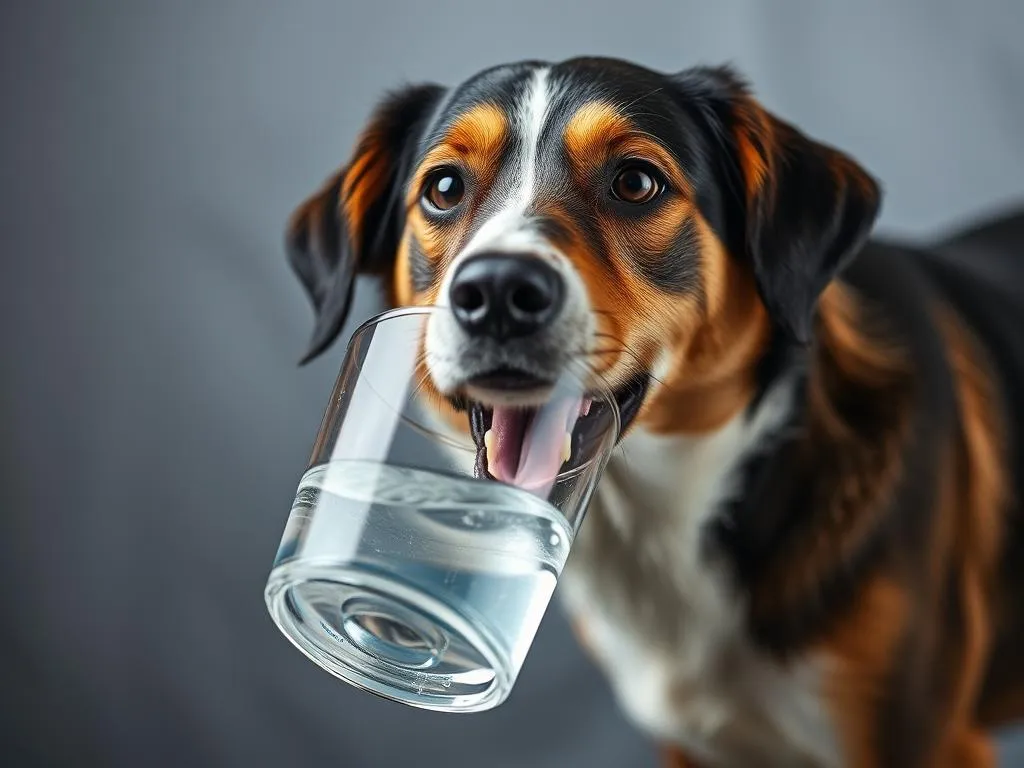
I. Introduction
A. Importance of Dog Health Care
When it comes to our furry companions, dog health care is of paramount importance. Just like humans, dogs require regular check-ups, a balanced diet, and proper hygiene to lead happy, healthy lives. Good health care significantly affects a dog’s quality of life, influencing not just their physical health but also their emotional well-being. A well-cared-for dog is often a happy dog, showcasing increased energy, playfulness, and longevity.
B. Role of Hydration in Dog Health
Among the various aspects of dog health care, hydration is crucial. Water plays a vital role in almost every bodily function, including digestion, circulation, temperature regulation, and joint lubrication. It is essential for maintaining overall health. This brings us to a key question that many dog owners ask: how much water should a dog drink a day? Understanding this can help ensure that your dog remains healthy, happy, and hydrated.
II. Understanding Your Dog’s Hydration Needs
A. Factors Affecting Water Intake
Several factors influence how much water your dog needs daily:
-
Size and Breed of the Dog: Larger breeds generally require more water than smaller ones. For example, a Great Dane will need significantly more hydration than a Chihuahua.
-
Age and Activity Level: Puppies and active dogs will need more water due to their higher energy expenditure. Conversely, older dogs may require less, but their health status must be considered.
-
Health Status and Medical Conditions: Dogs with certain medical conditions, such as diabetes or kidney disease, may have different hydration needs. Always consult your veterinarian for guidance.
B. General Guidelines for Daily Water Intake
As a general rule, dogs should drink approximately 1 ounce of water per pound of body weight daily. This means that a 50-pound dog should consume about 50 ounces of water each day.
Variations Based on Environmental Factors
Environmental conditions can also affect water intake. In hot, humid weather, dogs will require more water to stay hydrated, while colder climates may reduce their water needs slightly.
C. Signs of Dehydration
Recognizing the signs of dehydration is crucial for dog owners. Some physical signs include:
- Dry gums
- Lethargy
- Loss of skin elasticity (skin does not spring back when pinched)
Behavioral signs may include:
- Loss of appetite
- Excessive panting
- Decreased energy levels
Being aware of these symptoms can help you take action before dehydration becomes severe.
III. How Much Water Should a Dog Drink Daily?
A. Calculating Daily Water Needs
To determine your dog’s daily water requirement, use the following formula:
- Daily Water Requirement (in ounces) = Weight of Dog (in pounds) x 1 ounce
For instance, a 30-pound dog would need about 30 ounces of water daily.
B. Adjusting Water Intake for Activity and Environment
Exercise significantly impacts hydration needs. For example, if your dog plays outside or engages in vigorous exercise, they will need additional water to replenish lost fluids. Similarly, if you’re in a hot climate or during the summer months, it’s vital to increase their water intake accordingly.
IV. Best Practices for Keeping Your Dog Hydrated
A. Providing Fresh and Clean Water
Ensuring that your dog has access to fresh, clean water is fundamental to their hydration. Here are some tips for maintaining water quality:
-
Change Water Daily: Fresh water should be provided every day to encourage drinking.
-
Use Clean Bowls: Regularly wash your dog’s water bowl to prevent bacteria build-up.
-
Consider Water Fountains: Dogs are often more attracted to moving water, so a pet water fountain can encourage them to drink more.
B. Monitoring Water Consumption
Keeping track of your dog’s water intake can provide insights into their hydration levels. Here are some methods to monitor:
-
Keep a Daily Record: Note how much water you refill the bowl.
-
Observe Behavior: If your dog suddenly drinks less or more than usual, it may indicate health issues.
C. Encouraging Your Dog to Drink More Water
If your dog seems reluctant to drink, consider these strategies to encourage hydration:
-
Flavoring Water: A splash of low-sodium chicken or beef broth can make water more appealing.
-
Offering Ice Cubes: Many dogs enjoy chewing on ice cubes, which can also help keep them cool and hydrated.
-
Accessibility: Make sure that water is always available, especially after playtime or exercise.
V. Common Myths About Dog Hydration
A. Debunking Misconceptions
There are several myths surrounding dog hydration that can mislead owners:
-
Myth: Dogs Know How Much Water They Need: While dogs have instincts, they may not always drink enough, especially if they’re not feeling well or if water isn’t easily accessible.
-
Myth: Dogs Can Get Enough Water from Food Alone: While some dog foods contain moisture, they still require additional water intake to stay adequately hydrated.
B. Understanding Individual Needs
Each dog is unique, and their hydration strategies should be tailored to their specific needs. Always consider individual factors when determining how much water your dog should drink.
VI. Special Considerations
A. Puppies and Older Dogs
Puppies have unique hydration needs as they are still developing. They require more water relative to their body weight than adult dogs. Ensure that fresh water is always available to support their growth.
On the other hand, older dogs may have reduced hydration needs but may also be prone to health conditions that affect their water consumption. Always consult your veterinarian to ensure they remain adequately hydrated.
B. Health Conditions Impacting Hydration
Certain medical conditions can significantly impact a dog’s hydration needs. For example:
-
Diabetes: Dogs with diabetes often drink more water than usual and require careful monitoring.
-
Kidney Disease: These dogs may also have increased water needs but may need a specific diet and hydration plan as directed by a veterinarian.
Consultation with your veterinarian is crucial for personalized advice based on health status.
VII. Conclusion
A. Recap of Key Points
In summary, understanding how much water a dog should drink a day is vital for maintaining their health. Factors such as size, age, activity level, and environmental conditions all play a role in determining hydration needs.
B. Encouragement for Responsible Dog Owners
As a responsible dog owner, it’s essential to maintain an effective hydration routine. Regularly monitor your dog’s water intake and ensure they have access to clean water at all times. If you have any concerns about your dog’s health or hydration needs, don’t hesitate to consult with your veterinarian for guidance.
VIII. Additional Resources
While this blog provides a comprehensive overview of dog hydration, further reading and veterinary resources can enhance your knowledge. By staying informed, you can make the best choices for your furry friend’s health and well-being.









